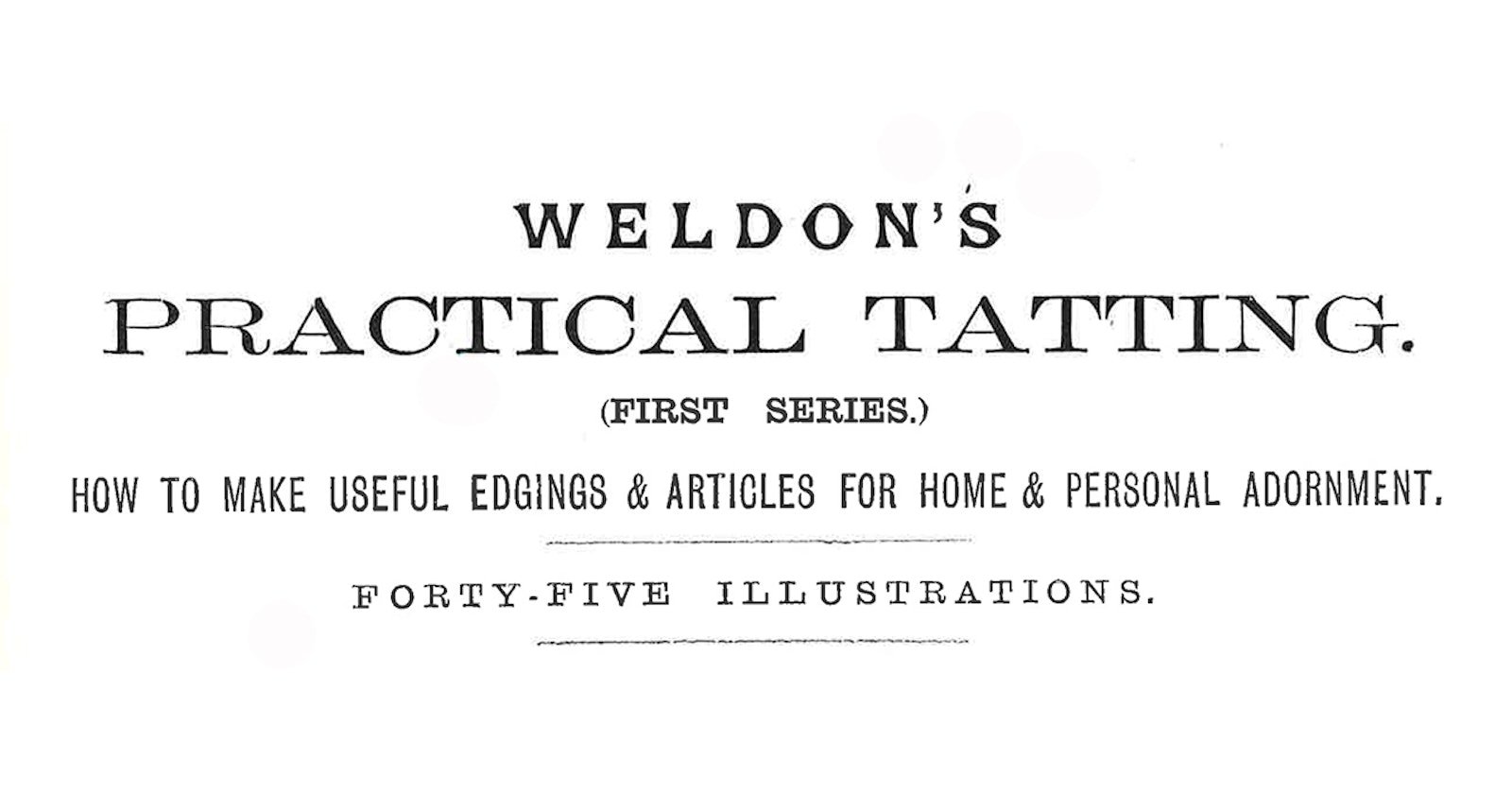Weldon’s Practical Needlework houses a wealth of information on Victorian tatting. Here’s our 22nd installment in this series fromWeldon’s Practical Needlework, Volume 4. The following are instructions for how to tat a “Wheel Medallion.” The material is reproduced here just as it appeared in England in 1889. No alterations or corrections were made.

Illustrations from Weldon’s Practical Needlework, Volume 4.
WHEEL MEDALLION. THIS is a pretty medallion composed entirely of ovals worked with the shuttle thread only. An antimacassar or small table cover can be made with Evans' crochet cotton, No. 10 or No. 12, or for a pincushion cover or d'oyley procure cotton No. 16. For the first wheel—Having the shuttle threaded and filled with cotton, make a loop round the fingers, and work 5 double stitches, 1 picot, 2 double and 1 picot alternately six times, 5 double, and draw up; * make a loop, do 5 double, join to the last picot of the previous oval, 2 double and l picot alternately six times, 5 double, and draw up; repeat from * till you have 8 ovals worked; remember to join the last picot of the eighth oval to the first picot of the first oval; cut the cotton, and tie the ends firmly together. For the second wheel—Begin with a loop round the fingers, work 5 double stitches, 1 picot, 2 double, l picot, 2 double, 1 picot, 2 double, join to the centre picot of one of the ovals in the first wheel, 2 double and 1 picot alternately three times, 5 double, draw up; make a loop, do 5 double, join to the last picot of the previous oval, 2 double, 1 picot, 2 double, 1 picot, 2 double, join to the centre picot of the next oval in the first wheel, 2 double and 1 picot alternately three times, 5 double, draw up; * make a loop, do 5 double, join to the last picot of the previous oval, 2 double and 1 picot alternately six times, 5 double, draw up; repeat from * till 8 ovals are worked, join the last picot of the eighth oval to the first picot of the first oval; join, and secure the ends of cotton. The third wheel is worked similarly to the second wheel; and the fourth wheel is to be joined by picot in four ovals to the corresponding four ovals in the wheels already worked, and the four wheels together form a perfect square. In making successive medallions join the centre picot of an oval to the centre picot of an oval in a medallion already worked, or they may be crocheted together. When sufficient medallions for your antimacassar or pincushion cover are worked, take a sewing needle and finer cotton, and fill up the spaces in the centre of the wheels, and the space in the centre of each medallion, with cobweb stitch, or other lace stitches, as shown in the engraving.
If you missed any part of this series on Victorian tatting fromWeldon’s, you can catch up on all of the blog posts here. Stay tuned for more Victorian tatting fromWeldon’s_ in future posts! Until then, find out more about tatting in our video download_ Shuttle Tatting_ with master tatter Georgia Seitz.
If you have created any items from this series, we would love to see them. Please email us at [email protected]._
—Elizabeth Prose
Featured Image: Weldon’s Practical Needlework, Volume 4, offers up a wealth of information on Victorian tatting.

